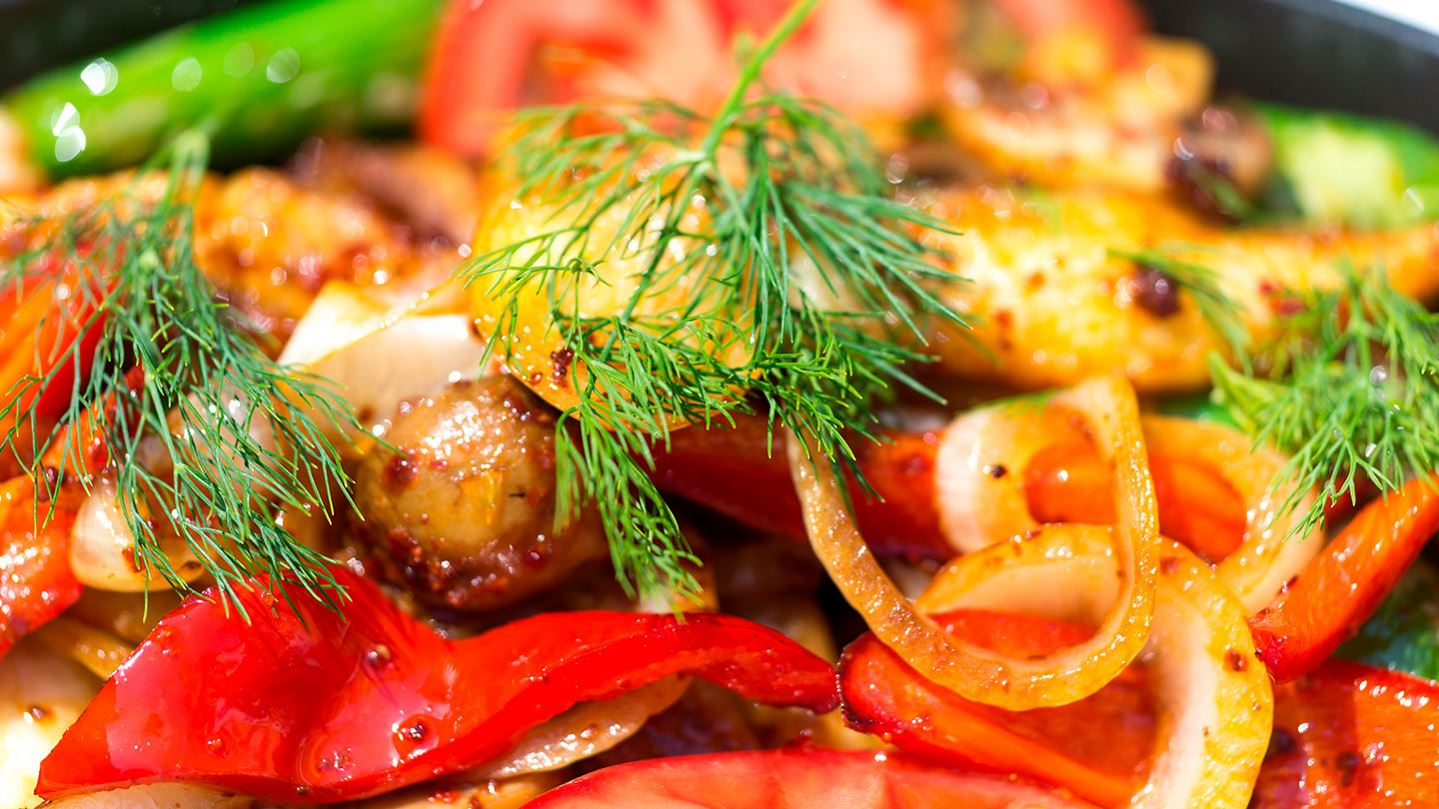
Cooked and Dressed Vegetable Products
MAP: A proven way to effectively extend the shelf life of your vegetable products.
Food items: Bean Chillies, Bhajis, Broccoli in Cheese, Bubble and Squeak, Cauliflower Cheese, Coleslaw, Cooked Beans, Cooked Beetroot, Cooked Potatoes, Corn Fritters, Garlic Mushrooms, Lentil Cutlets, Nut Cutlets, Other Dressed Salads, Pakoras, Pasta Salads, Pilafs, Potato Cakes, Potato Salads, Quorn® Dishes, Rice Salads, Rissoles, Stuffed Aubergines, Stuffed Peppers, Stuffed Tomatoes, Stuffed Vine Leaves, Vegetable Bakes, Vegetable Chillies, Casseroles containing Vegetables, Vegetable Pastas, Vegetable Crumbles, Vegetable Curries, Vegetable Dosas, Vegetable Flans, Vegetable Pilau, Vegetable Shepherd's Pie, Vegetarian Burgers, other items
Recommended gas mixture
30-50% CO2
50-70% N2
The gases and mixtures listed above are for general guidance. To identify the optimum gas for your product and process, we recommend you undertake a product trial, with the help of an Air Products MAP gas specialist.
Storage temperature
Legal maximum*: 8° C
Recommended: 0° C to + 3° C
Achievable shelf-life
In air: 3-14 days
In MAP: 7-21 days
Principle spoilage organisms and mechanics
Pseudomonas species (in air), Lactic acid bacteria, Entereobacteraceae, yeasts, moulds and enzymatic browning.
Food poisoning hazards include
Clostridium species, Salmonella species, Staphylococcus aureus, Listeria monocytogenes, Bacillus species, E.coli and E.coli 0157.
Typical MAP machines
Retail
• TFFS – Thermoform-fill-seal
• PTLF – Preformed tray and lidding film
• HFFS – Horizontal form-fill-seal
Typical types of package**
Retail: Tray and lidding film, Tray inside pillow pack
Examples of typical MAP materials
Retail
Tray:
• UPVC/PE
• HDPE
• EPS/EVOH/PE
Lidding and/or pillow pack film:
• PET/PVdC/PE
• PA/PVdC/PE
• PC/EVOH/EVA
• MPET
• MOPP
• OPP/PVdC
The principal spoilage mechanisms affecting cooked vegetable products are microbial growth and oxidative rancidity. MAP with CO2/N2 mixtures is very effective at inhibiting these spoilage mechanisms, thereby significantly extending the shelf-life of such products. A gas/product ratio of 2:1 is recommended. For cooked vegetable products, the heating process should kill vegetative bacterial cells and inactivate degradative enzymes. Consequently, spoilage of cooked vegetable products is primarily due to post-cooking contamination by micro-organisms which can be minimised by good hygiene and handling practices. Similarly, dressed vegetable products can be spoiled by post-packaging contamination.
Possible food poisoning hazards associated with cooked vegetable products include the germination and growth of heat resistant spores if recommended chilled temperatures are not maintained. The other possible food poisoning hazards can arise from post-cooking contamination as a result of poor hygiene and handling practices and faulty seal integrity. Poor temperature control will also exacerbate the problem of microbial growth.
Dressed vegetable products usually have a pH < 4.0 and hence virtually all possible food poisoning bacteria are inhibited. Spoilage of dressed vegetable products is primarily due to enzymic browning and microbial growth of acid tolerant lactobacilli, yeasts and moulds. For both cooked and dressed vegetable products, it is recommended that strict control over temperature, hygiene and handling be maintained throughout.
* The Food Safety (Temperature Control) regulations 1995 states that the maximum Storage temperature for chilled perishable foods is 8°C. There will be flexibility to vary this when scientifically justified. For legal temperature storage requirements, please contact the Campden BRI.
** Tubs and pots are commonly used for many cooked and dressed vegetable products.